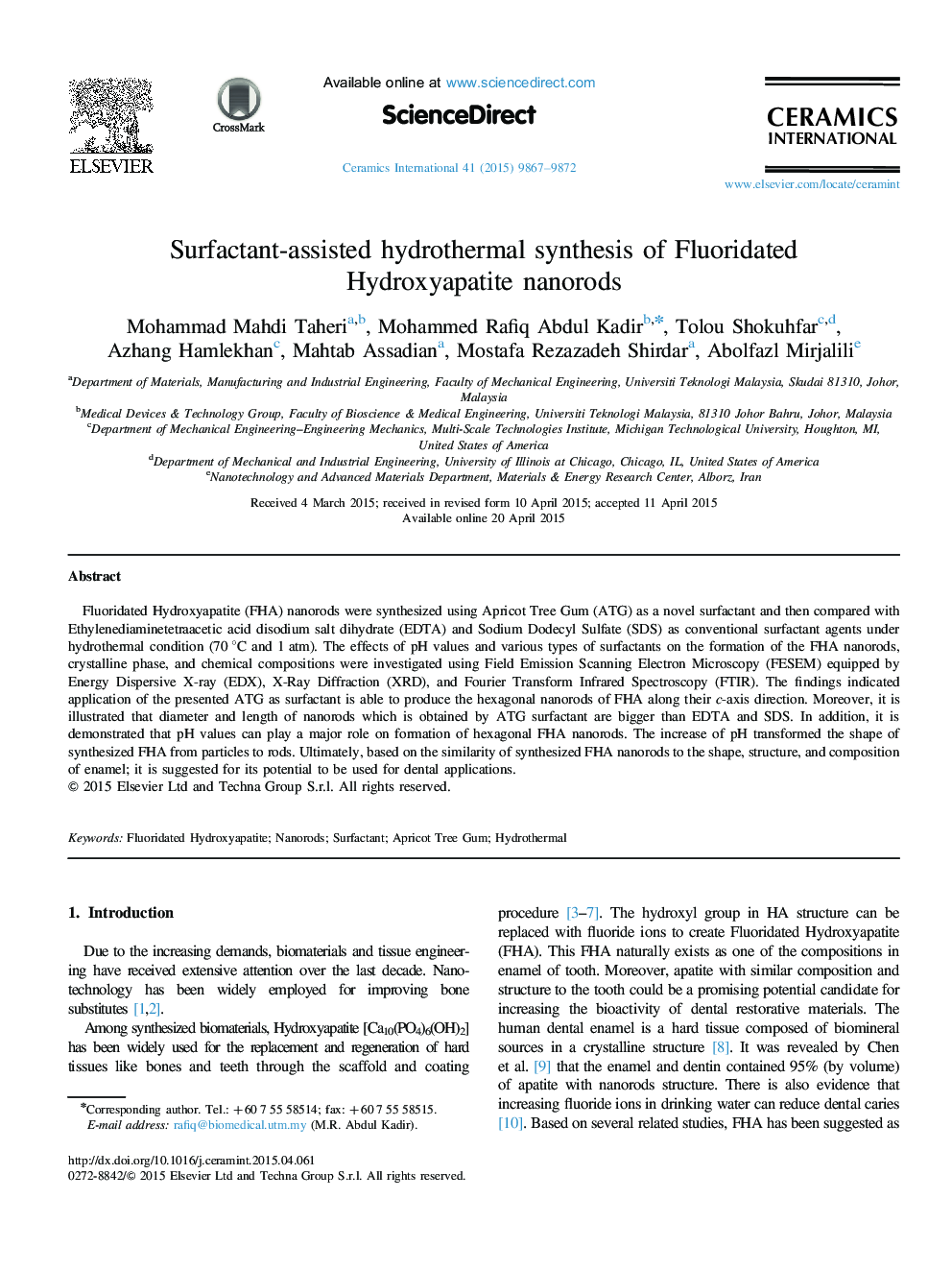| Article ID | Journal | Published Year | Pages | File Type |
|---|---|---|---|---|
| 1460276 | Ceramics International | 2015 | 6 Pages |
Fluoridated Hydroxyapatite (FHA) nanorods were synthesized using Apricot Tree Gum (ATG) as a novel surfactant and then compared with Ethylenediaminetetraacetic acid disodium salt dihydrate (EDTA) and Sodium Dodecyl Sulfate (SDS) as conventional surfactant agents under hydrothermal condition (70 °C and 1 atm). The effects of pH values and various types of surfactants on the formation of the FHA nanorods, crystalline phase, and chemical compositions were investigated using Field Emission Scanning Electron Microscopy (FESEM) equipped by Energy Dispersive X-ray (EDX), X-Ray Diffraction (XRD), and Fourier Transform Infrared Spectroscopy (FTIR). The findings indicated application of the presented ATG as surfactant is able to produce the hexagonal nanorods of FHA along their c-axis direction. Moreover, it is illustrated that diameter and length of nanorods which is obtained by ATG surfactant are bigger than EDTA and SDS. In addition, it is demonstrated that pH values can play a major role on formation of hexagonal FHA nanorods. The increase of pH transformed the shape of synthesized FHA from particles to rods. Ultimately, based on the similarity of synthesized FHA nanorods to the shape, structure, and composition of enamel; it is suggested for its potential to be used for dental applications.
